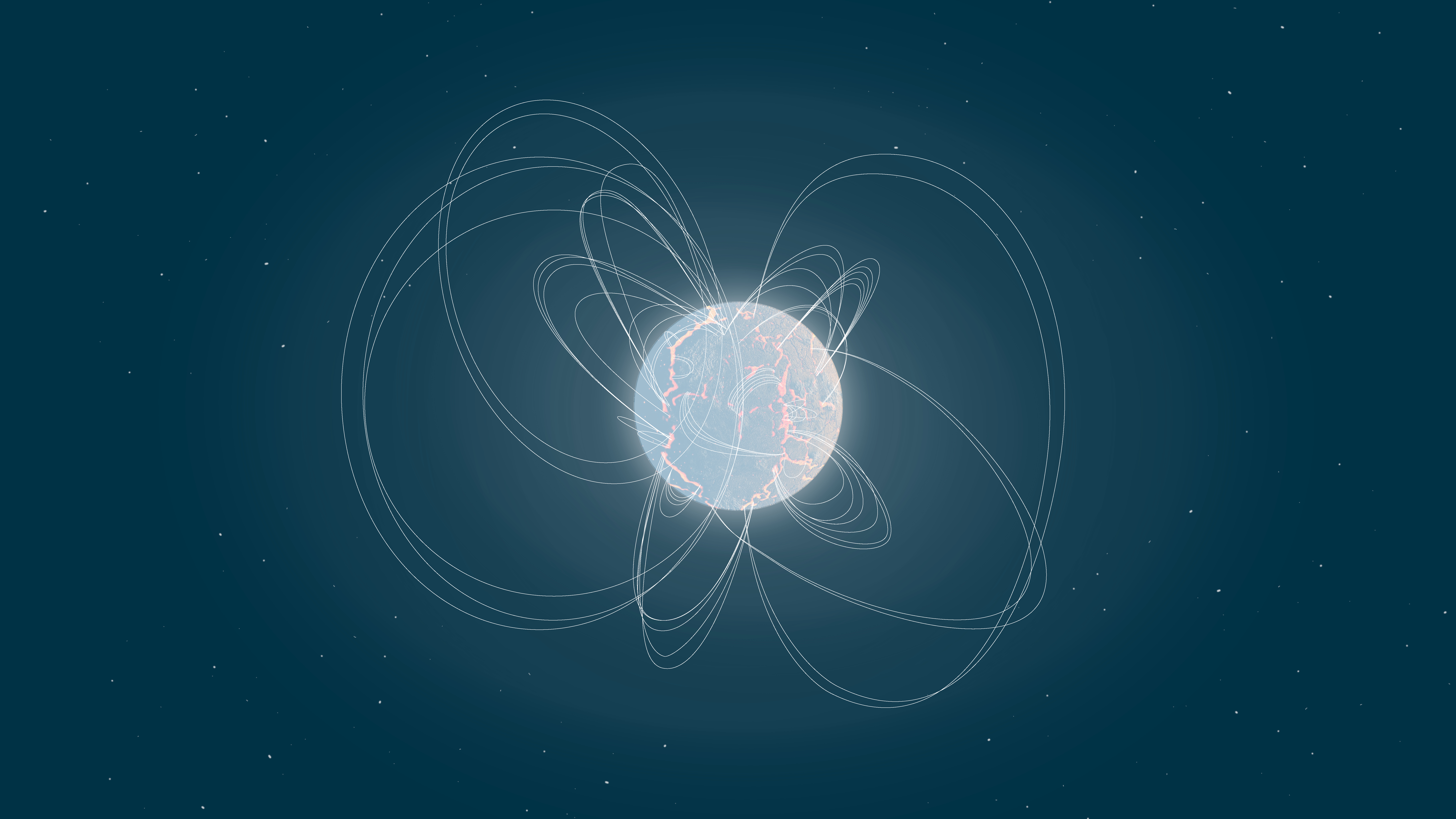Cosmic Gold Generators

Gold has fascinated humanity since time immemorial and has made its mark on history in many ways. Until recently, however, we knew nothing about the cosmic “alchemists” capable of creating gold. These are highly magnetised neutron stars known as magnetars.
Neutron stars are formed when the core of a massive star collapses into a sphere roughly the size of Prague during a supernova explosion, resulting in an object of incredibly high density. A single teaspoon of neutron star matter would weigh approximately a billion tonnes. Magnetars, a special type of neutron star, are further distinguished by their extremely powerful magnetic fields — strong enough to instantly kill all living things within a thousand kilometres and to disrupt any digital communication across tens of thousands of kilometres.
Magnetars are, therefore, far from the calmest objects in the universe. Their giant flares —intense flashes of gamma and X-ray radiation — are accompanied by matter ejection from the star’s crust into the surrounding space. “These and similar phenomena are the focus of our research. We are investigating how and in what quantities material is ejected during a magnetar giant flare,” explains Jakub Cehula from the Institute of Theoretical Physics at the Faculty of Mathematics and Physics, Charles University. In February last year, the scientific journal Monthly Notices of the Royal Astronomical Society published an article, in which Cehula and his co-authors demonstrate, among other things, that the ejected matter from magnetars forms elements heavier than iron — gold being one such example.
Such magnetar giant flares are extremely rare events, occurring in the Milky Way only once every several decades.
The Principle Confirmed by ESA and NASA Data
Roughly a year after the aforementioned theoretical study, another publication appeared in The Astrophysical Journal Letters, led by doctoral student Anirudh Patel from Columbia University in New York. “It’s a pretty fundamental question in terms of the origin of complex matter in the universe, and at the same time a fun puzzle that hasn’t actually been solved,” he stated in a NASA press release.
Since the Big Bang, the early universe has contained only hydrogen, helium, and trace amounts of lithium. Heavier elements, such as iron, were formed later in stars. However, astrophysics has not yet fully explained how even heavier elements came into existence.
Patel and his co-authors — among them once again Jakub Cehula from the Institute of Theoretical Physics — drew on two-decade-old archival data from ESA and NASA satellites. The team investigated whether the radiation observed from magnetar giant flares could, in fact, be linked to the process of forming heavy elements. This would occur under the influence of free neutrons through a series of successive and interlinked nuclear reactions. These reactions would produce radioactive elements, which would then decay into stable ones — such as gold. These nuclear processes would necessarily be accompanied by gamma radiation.

Illustration by ESA
In 2004, the European satellite INTEGRAL managed to capture a magnetar giant flare accompanied by a faint gamma-ray signal — something no one was able to explain at the time. However, more than twenty years later, analysis has confirmed the earlier hypothesis: that magnetar giant flares are indeed a source of elements heavier than iron, and that they may account for up to 10% of the total amount of such elements in our galaxy. The remainder could originate from neutron star mergers — events confirmed as heavy element producers by observations as early as 2017.
The researchers also supported their conclusions with data from NASA’s now-defunct RHESSI satellite and the still-operational Wind satellite. Thus, the cosmic gold generators — theoretically firstly predicted in Prague — have now been definitively confirmed.
The research team — comprising Anirudh Patel (Columbia University), Brian Metzger (Columbia University / Flatiron Institute), Eric Burns (Louisiana State University), Jared Goldberg (Flatiron Institute), Todd Thompson (Ohio State University), and Jakub Cehula (Faculty of Mathematics and Physics, Charles University) — can now only wait for their publication to make its way into a science fiction story. After all, no true sci-fi enthusiast could possibly resist a plot involving cosmic gold…
Media contact:
Mgr. Jakub
Cehula, Institute of Theoretical Physics, Faculty of Mathematics and Physics,
Charles University
jakub.cehula@matfyz.cuni.cz
Tel.:
+420 737 572 670
Links to additional press releases:
- Where Does Gold Come From? NASA Data Has Clues (NASA)
- Flares From Magnetized Stars Can Forge Planets’ Worth of Gold, Other Heavy Elements (Flatiron Institute)
- A Cosmic Explosion Forged Heavy Elements Like Gold and Platinum (Columbia University)
- Astrophysicists Strike Gold (Louisiana State University)
- Flares from magnetized stars can forge planets’ worth of gold, other heavy elements (EurekAlert)
OPMK



